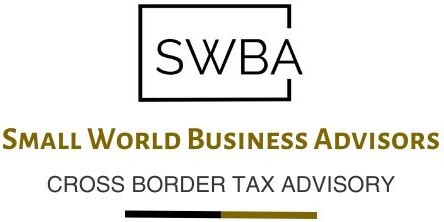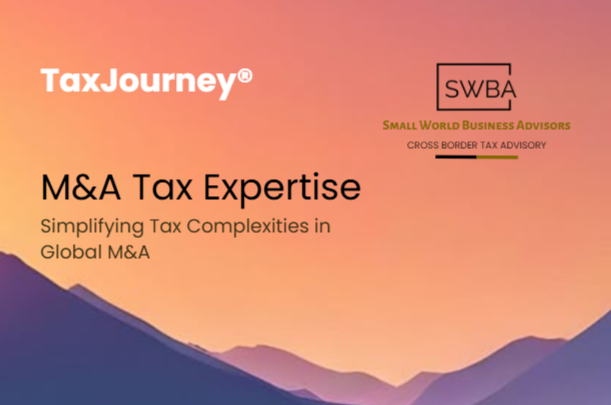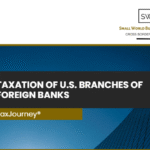Tax due diligence is a critical process in mergers and acquisitions, aimed at providing a comprehensive evaluation of a company’s tax position. This includes identifying potential exposures, uncovering unpaid tax obligations, and exploring opportunities for reducing tax liabilities, ultimately ensuring clarity and minimizing risks during the transaction.
Traditionally viewed as a buyer-centric activity, tax due diligence also offers significant advantages to sellers. By engaging a specialized sell-side team, sellers can thoroughly review their operations, pinpoint tax related risks, and implement effective remediation plans. This proactive approach allows sellers to address and resolve potential issues ahead of buyer scrutiny, facilitating smoother negotiations and enhancing overall deal value.
Significance of Tax due diligence for Buyers:
- Undisclosed Tax Liabilities: Targets may have hidden obligations such as unpaid corporate taxes, unresolved indirect tax issues, or pending payroll tax liabilities.
- Transfer Pricing Compliance: In cross-border transactions, under-documented or misaligned intercompany pricing can attract regulatory scrutiny and penalties.
- Verification of Tax Incentives: Significant tax incentives such as R&D credits or investment subsidies claimed by the target may later face challenges, leading to clawbacks or penalties if not properly substantiated
- Utilization of Tax Attributes: Valuable tax attributes, like net operating losses (NOLs), can become restricted or less valuable once ownership changes.
Significance of Tax due diligence for Sellers:
- Legacy Tax Disputes: Unresolved or ongoing tax audits and disputes can dissuade potential buyers or force a downward adjustment in deal pricing.
- Exit Taxation Challenges: The sale of a business may trigger significant capital gains or withholding taxes, directly impacting net sale proceeds.
- Indemnity and Warranty Arrangements: Buyers tend to demand robust tax indemnities to protect against post-closing surprises, potentially exposing sellers to extended risk.
- Cross-Jurisdictional Tax Compliance: International transactions may entail diverse tax regimes, which can expose sellers to risks such as unanticipated withholding taxes on repatriated funds.
Tax Structuring
Tax structuring in mergers and acquisitions (M&A) is a sophisticated process aimed at optimizing the deal architecture to minimize tax liabilities for both buyers and sellers. It involves a comprehensive evaluation of the transaction form, whether it be a stock purchase, asset acquisition, or merger and a thorough assessment of the target’s tax attributes alongside the tax profiles of the parties involved.
- Deciding between a stock purchase, asset purchase, or merger carries distinct tax consequences. For instance, asset acquisitions may allow for a step-up in basis, enabling accelerated depreciation and immediate tax deductions, whereas stock purchases generally preserve existing tax attributes, such as net operating losses, but may also transmit legacy tax issues.
- Evaluating the target’s historical tax attributes, such as net operating losses, tax credits, and depreciation schedules is critical. These factors can significantly affect the overall tax efficiency of the transaction, influencing both the structuring and the valuation of the deal.
- The tax classification of the entities involved plays a crucial role. For example, aligning the deal structure with the buyer’s and seller’s tax status can help mitigate adverse tax consequences, ensuring that the planned benefits, whether through deductions or credits, are fully realized.
- Utilizing pass-through entities, such as LLCs and S corporations, can offer additional layers of tax efficiency. These structures often facilitate the flow-through of income and deductions, thereby avoiding double taxation at the corporate level.
Post-Merger Integration
Post-Merger Integration (“PMI”) is essential for unifying the disparate strategies and objectives of merging entities under a cohesive long-term vision. By ensuring strategic alignment, PMI harmonizes varying goals to facilitate the realization of synergies, such as increased market share, cost efficiencies, and improved access to innovative technologies that drive value creation. In addition, the process emphasizes operational efficiency by consolidating processes, eliminating redundancies, and establishing a unified operating model.
Recognizing the critical importance of human capital, a robust PMI strategy also prioritizes cultural integration, bridging differences to foster a collaborative and cohesive workplace. Ultimately, effective PMI sustains business momentum and enhances financial performance, thereby delivering significant value to shareholders and ensuring the long-term success of the combined organization.
Exit Planning
Firms must determine the optimal transaction structure (e.g., whether an asset or share sale) to minimize capital gains and manage deferred tax liabilities. Timing is critical due to shifting tax regulations, and cross-border deals add layers of complexity with varying local tax laws and potential double taxation. Additionally, safeguarding tax attributes like net operating losses or credits is vital to preserving post-exit value. We help by crafting exit strategies that minimize tax burdens while maximizing deal value by evaluating whether an asset or share sale best suits the client’s needs, advise on optimal timing amidst evolving tax laws, and manage cross-border tax complexities. In order to preserve valuable tax attributes (e.g., net operating losses and credits) ensuring that the exit is as tax-efficient as possible.
Preserving Key Attributes
Preserving key tax attributes (most importantly net operating losses (“NOLs”)) in mergers and acquisitions presents a multifaceted challenge, compounded by evolving tax regulations and cross-border complexities. Below is an enhanced overview of the primary challenges and strategic considerations:
- Change-of-Ownership Limitations: Under Section 382, significant ownership changes cap the annual offset of pre-acquisition NOLs, diminishing their post-transaction value. Careful planning is key to managing this limitation and preserving effective utilization.
- Structural Trade-Offs: Transaction structure is key. Asset sales may trigger a basis reset that risks NOL continuity, while stock sales typically preserve tax benefits but could bring legacy liabilities. Tax-deferred reorganizations often provide a balanced, tax-neutral alternative.
- Emerging Tax Burdens: The dynamic tax landscape marked by global minimum taxes, revised depreciation rules, and intensified compliance requirements demands precise forecasting and innovative structuring strategies to protect and optimize tax benefits established at closing.
- Double Taxation Risks: In cross-border transactions, varying local tax laws can lead to double taxation when NOLs recognized in one jurisdiction are not fully acknowledged in another. Effective tax planning, leveraging tax treaties and aligning domestic treatments is essential to mitigate these risks.
At SWBA, we begin with meticulous due diligence, assessing key tax attributes such as net operating losses, credits, and liabilities to ensure a comprehensive understanding of both risks and opportunities. We assist with selecting the optimal transaction structure, whether that be an asset sale, stock purchase, or tax-deferred reorganization to maximize tax benefits while addressing change-of-ownership limitations and managing legacy liabilities effectively. Through specialized cross-border tax planning, we navigate the complexities of multi jurisdictional regulations, mitigating double taxation risks through strategic use of tax treaties and aligned domestic treatments. Our proactive approach to evolving tax regulations, including global minimum taxes and updated depreciation rules, safeguards your post-transaction tax profile and ensures long-term compliance and financial efficiency.
Next Wave of Cross-Border Mergers and Acquisitions
Shaping Tomorrow’s Global Deals
Cross-border mergers and acquisitions (M&A) remain a vital element of global business growth, empowering companies to broaden their market presence, strengthen competencies, and achieve cross-border synergies. With the evolving landscape influenced by globalization, changing tax regulations, and dynamic trade policies, businesses must navigate new challenges and seize emerging opportunities to stay ahead. Below is a detailed exploration of the key factors shaping the future of cross-border M&A.
Emerging Markets & Digital M&A
Businesses are increasingly targeting emerging economies, capitalizing on high-growth regions fueled by a rising middle class, accelerated urbanization, and technological advancements. Simultaneously, the rapid proliferation of digital technologies is transforming industries like fintech, e-commerce, and renewable energy, driving global M&A activity and fostering strategic, innovative collaborations.
Global Taxation Challenges
Governments worldwide are enforcing increasingly stringent tax policies through initiatives like Base Erosion and Profit Shifting (“BEPS”) and General Anti-Avoidance Rules (“GAAR”), necessitating precise and strategic tax planning to ensure compliance while protecting value. Cross-border transactions pose challenges in transfer pricing, requiring well-structured strategies to align with international regulations and prevent disputes. The effective utilization of bilateral tax treaties is critical for minimizing withholding taxes and enhancing cash flow efficiency in global operations.
Evolving Trade Patterns and Geopolitical Changes
The rise of protectionism has introduced significant obstacles for cross-border mergers and acquisitions, as heightened scrutiny over foreign investments in strategic industries, often tied to national security concerns, limits deal opportunities. Geopolitical tensions, including trade sanctions, political instability, and economic nationalism, further complicate the landscape requiring businesses to develop agile and adaptive strategies. Additionally, currency volatility presents risks to transaction valuations and financial outcomes, making the implementation of effective hedging strategies an essential aspect of comprehensive transaction planning.
Industry Focused M&A Tax Solutions
Financial Services
Banking, insurance, and fintech: conduct meticulous due diligence to uncover hidden liabilities, streamline tax compliance, and navigate integration challenges such as aligning regulatory frameworks and mitigating double taxation.
Healthcare
Scrutinize R&D and clinical trial costs to maximize credits while optimizing transfer pricing across entities. This targeted approach uncovers hidden liabilities and streamlines the tax structure for a more efficient post-deal integration.
Manufacturing
Verification of fixed asset records and depreciation schedules to ensure accurate write-offs and valuations by assessing intercompany transactions and supply chain arrangements to uncover hidden liabilities while leveraging incentives like accelerated depreciation and energy efficiency credits, optimizing the deal’s tax structure for a smoother integration.
Technology
In the technology sector, encompassing software, SaaS, and artificial intelligence, we streamline deal value by optimizing R&D credits and structuring IP transactions for tax efficiency all while adapting to rapidly evolving business models. In the technology sector, encompassing software, SaaS, and artificial intelligence, we streamline deal value by optimizing R&D credits and structuring IP transactions for tax efficiency all while adapting to rapidly evolving business models.
Real Estate
From property taxes and depreciation concerns to complex asset structuring. We tackle these issues by conducting precise due diligence to pinpoint exposures like depreciation recapture, advising on optimal transaction structures to maximize tax benefits.
Private Equity & Investment Management
We conduct deep due diligence to uncover hidden liabilities and advise on structuring deals for optimum tax outcomes. Structuring complex tax transactions, capital gains optimization, and cross-border compliance to ensure transactions are tax-efficient while safeguarding investor returns.
The information contained in this post is merely for informative purposes and does not constitute tax advice. For more information, feel free to reach us at [email protected]
Copyright 2025 Small World Business Advisors LLC www.swbadvisors.com













